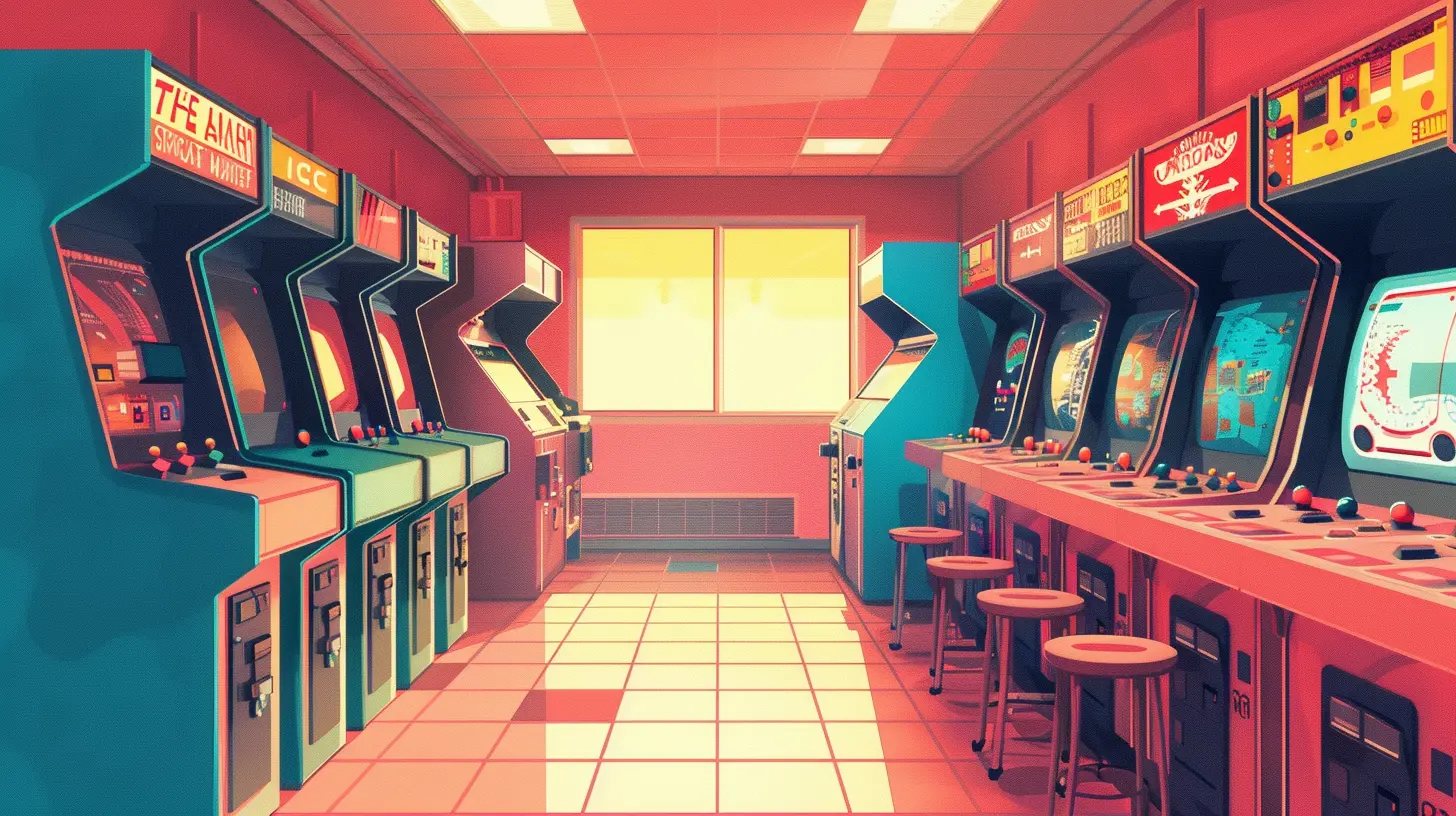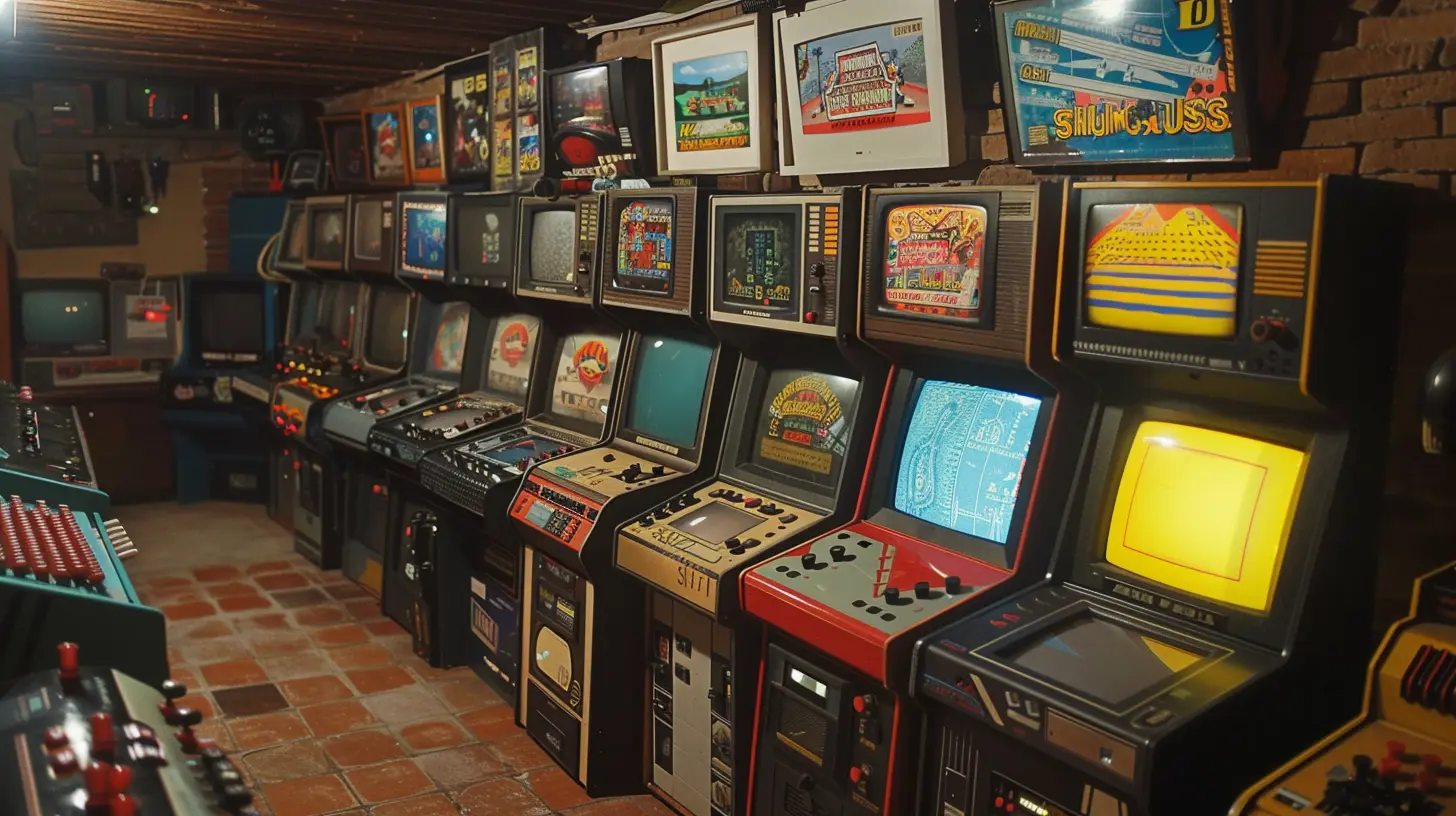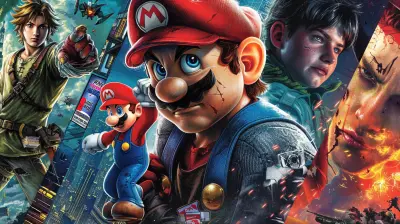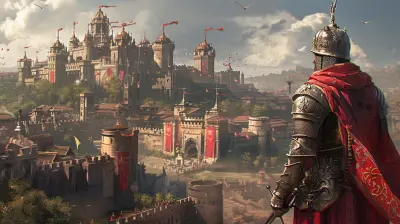When Simplicity Was Key: Understanding the Minimalist Appeal of Early Games
2 May 2025
Let’s be real for a second—life can be pretty overwhelming these days, right? Everything is bigger, better, flashier, and sometimes… just too complicated. And that got me thinking about games. Remember a time when video games weren’t trying to knock your socks off with life-like graphics, endless DLCs, or massive open worlds? When all you really needed was a simple concept, a couple of buttons, and a good ol’ CRT screen? Those early gaming days were something special, weren’t they? Minimalist, sure, but that was the charm. Let’s take a stroll down memory lane and unpack why simplicity was key and why those early games had—and still have—a certain magic that today’s blockbusters sometimes miss.
The Power of Simplicity in Early Games
First off, let’s talk about why simple games worked so well. Back in the day, hardware limitations played a huge role. Developers didn’t have terabytes of storage or cutting-edge GPUs to lean on. Nah, they were working with kilobytes—literal crumbs of space compared to what we have now. This restriction forced them to focus on gameplay mechanics over graphical fluff. And guess what? It worked. It wasn’t about how pretty something looked, but about how it felt to play.Take Pong for example. A white dot and two paddles on a black background—could it be any simpler? But, oh man, the hours people sank into that game! It was frustrating, competitive, and addictive, all without a single storyline or HD texture in sight. The same goes for games like Tetris or even the first Super Mario Bros. These titles didn’t lean on bells and whistles—they relied on solid mechanics that got their hooks into you.
Why Less Was More
Here’s a fun thought: when you don’t have too many distractions, you tend to focus on what really matters. Early games thrived because they didn’t overwhelm you with a million side quests, overly complicated tutorials, or never-ending HUD icons. Nope, they just dropped you in and said, “Here’s what you need to do. Go for it.”Think about Pac-Man, for instance. The concept was ridiculously straightforward—eat dots, avoid ghosts, profit. But the tension as those ghosts closed in on you? Pure adrenaline. There wasn’t a need for a deep backstory or a cinematic cutscene every 30 seconds. The gameplay loop itself was the star of the show. And honestly, there’s something refreshing about that, isn’t there?
The "Pick-Up-And-Play" Experience
One of the best things about early games was how approachable they were. You didn’t need a manual the size of a phone book to figure out how to play. (Looking at you, modern RPGs.) Most of the time, you could just grab a controller, press a button, and you were good to go. Simple mechanics meant there wasn’t much of a learning curve, so anyone—from your little cousin to your grandma—could jump in.Case in point: Snake, the game that came preloaded on what felt like every Nokia phone ever. You moved a line around, collected dots, and tried not to crash into yourself. That was it. No tutorials, no extra baggage. And yet, it was so satisfying. It’s the kind of simplicity that made these games universally loved.
Nostalgia: The Unbeatable Bonus
Let’s not forget the warm, fuzzy feelings these early games give us. Even if you weren’t alive during their heyday, you’ve probably experienced the magic of playing them at some point. Maybe it was on a retro console at a friend’s house or an arcade cabinet at some hipster bar. Wherever it happened, early games have this way of pulling you in and making you smile.Why is that? Well, nostalgia is a heck of a drug. These games remind us of simpler times—not just in terms of gameplay but in life, too. They take us back to childhood afternoons spent huddled around a dusty TV or to the neon-lit arcades where quarters were king. Even in today’s gaming landscape, revisiting these classics feels like coming home.
The Minimalist Aesthetic
Beyond gameplay, there’s something oddly charming about the way early games looked and sounded. Sure, the graphics were blocky, and the music was basically a series of beeps and boops, but there was beauty in that minimalism. Those pixelated worlds left a lot to your imagination, and honestly, that was part of the fun. You weren’t handed hyper-realistic visuals—you filled in the blanks yourself.Take The Legend of Zelda, for example. The original game was a sprawling adventure, but with its simple sprites and map design, it forced players to focus on exploration and problem-solving rather than gawking at pretty scenery. It was like looking at a treasure map and piecing together the story as you went. And the soundtracks? Iconic. They didn’t need orchestras to stick in your head for decades.
Lessons Modern Games Can Learn
Now, don’t get me wrong—I love a good AAA game as much as the next person. Open worlds, deep narratives, and jaw-dropping graphics are fantastic. But sometimes, modern games can feel… bloated. Like they’re trying to do too much all at once, and in the process, they lose sight of what’s really important: fun.Maybe that’s why indie games have gained so much traction in recent years. Titles like Stardew Valley, Celeste, and Hollow Knight have taken cues from early games, focusing on tight mechanics and meaningful experiences rather than sheer spectacle. They’re proof that simplicity still works—and that there’s a huge audience for it.
Game developers today could take a page from the past. Not every game needs to push the boundaries of technology; sometimes, all you need is a clever idea executed well. After all, isn’t it better to be memorable for doing one thing great than forgettable for doing ten things “okay”?
The Legacy of Early Games
Let’s give credit where it’s due: without those early games, we wouldn’t have the industry we do today. They laid the foundation, taught us what works, and—most importantly—proved that gaming could be a legitimate form of entertainment. And while they may seem simple compared to today’s standards, they’re anything but primitive. If anything, they were ahead of their time.Games like Space Invaders, Frogger, and Donkey Kong paved the way for innovation. They showed us that storytelling, creativity, and community could all thrive in this medium. And even now, decades later, these games still inspire developers and bring joy to players around the world. That’s a legacy worth celebrating, don’t you think?
Why They’ll Always Matter
At the end of the day, early games remind us of one very important thing: fun doesn’t have to be complicated. They’re a testament to the idea that less can really be more. Whether it’s a simple concept executed flawlessly or a minimalist design that leaves room for imagination, these games prove that sometimes, the basics are all you need.So next time you’re feeling burnt out from yet another sprawling, 100-hour RPG or an overly complex multiplayer shooter, maybe take a step back. Fire up an emulator (or, if you’re lucky, an old-school console), and let yourself get lost in the beautiful simplicity of early games. Trust me, it’s worth it.
all images in this post were generated using AI tools
Category:
Retro GamesAuthor:

Brianna Reyes
Discussion
rate this article
4 comments
Jocelyn Underwood
This article beautifully highlights how early games thrived on simplicity, showcasing the charm and creativity that emerged from limited technology. Nostalgia aside, there's an undeniable depth in minimalist design that continues to influence modern gaming.
May 14, 2025 at 3:19 PM

Brianna Reyes
Thank you! I’m glad you appreciated the exploration of minimalist design and its lasting impact on gaming. Simplicity often fuels creativity, and it’s fascinating to see that legacy continue in modern titles.
Reece Duffy
This article brilliantly highlights how early games leveraged simplicity to foster creativity and imagination. By focusing on core mechanics, they created engaging experiences that resonate even today, reminding us that less can indeed be more.
May 12, 2025 at 2:52 PM

Brianna Reyes
Thank you! I'm glad you found the article resonant. Simplicity really does have a lasting impact on creativity in gaming.
Amy McGowan
Early games embraced simplicity, fostering creativity and accessibility; their minimalist appeal continues to influence modern gaming design today.
May 10, 2025 at 3:30 AM

Brianna Reyes
Thank you for highlighting how early games' simplicity not only sparked creativity but also laid the foundation for modern design principles!
Andrew Rogers
Embrace simplicity; it sparks creativity!
May 8, 2025 at 4:53 PM

Brianna Reyes
Absolutely! Simplicity allows ideas to shine, freeing up creativity and enhancing engagement in gaming. Thank you for your insight!



